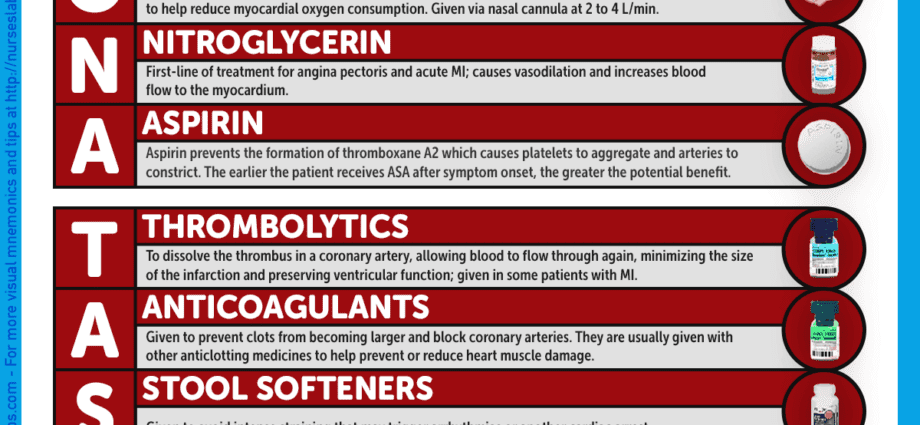Contents
Prevention and medical treatment of myocardial infarction
Prevention of infarction
The prevention of infarction involves the management of risk factors. To limit the risk of a heart attack, you must stop smoking and drinking excessively. It may be important to change some of your bad habits, for example to fight against overweight and hypercholesterolemia (= excess lipids in the blood).
Certain drugs likeaspirine can be prescribed as a preventive measure in people at high risk of suffering from a heart attack, as can statins to correct high cholesterol.
Medical treatments for infarction
The treatment of the infarction must start as soon as possible, as soon as the ambulance arrives which will take the sick person to an interventional cardiology unit.
Medicines can be given to thin the blood and help blood flow to the heart. It can, for example, be aspirin or thrombolytic agents, which destroy the clot which clogs the artery. The faster the thrombolytic is given, the better the chances of survival. The complications are also less serious.
At the hospital, a angioplasty can be achieved. From antiplatelet drugs (clopidogrel, aspirin, prasugrel) may be prescribed to limit the risk of a new clot forming. Heparin, an anticoagulant to thin the blood, ACE inhibitors used in high blood pressure, and trinitrin (nitroglycerin) may also be given. Beta blockers can make it easier for the heart to work by slowing the heart rate and lowering blood pressure. Prescribing statins, which are cholesterol medications, can improve survival if given quickly.
Pain relievers such as morphine may be prescribed. Drug treatment, usually consisting of beta blockers, antiplatelet agents, statins and ACE inhibitors, is individualized for each patient and may change over time. In all cases, the drug must be taken regularly. The prescribed treatment must be properly followed.
On the surgical level, a angioplasty is therefore carried out. This is to unclog the blocked artery. To do this, the doctor inserts a long, thin, flexible tube, a catheter, into the thigh and then goes up to the heart. At the end of the catheter is a balloon which can be inflated. Thus, it crushes the clot and restores blood circulation. a stent, a kind of spring, can then be installed. It allows the artery to stay wide open, at a normal diameter. a bypass can also be achieved. This is a surgical procedure that allows the blood flow to be diverted. It no longer passes through the portion of the artery blocked by atherosclerosis but by another path. Thus, the circulation of blood to the heart is improved. Concretely, the surgeon places on either side of the blocked area a blood vessel taken from another part of the body (generally from the leg). The blood passes through this new “bridge”. If more than one area is obstructed, more than one bypass may be required.
After a myocardial infarction, examinations will estimate the extent of the damaged area of the heart muscle, detect a possible complication, such as heart failure, and assess the risk of recurrence. At the end of their hospitalization, the person who has suffered a heart attack will be offered a cardiovascular rehabilitation. In the following year, she will have to go very regularly to her general practitioner and her cardiologist for very close follow-up.










